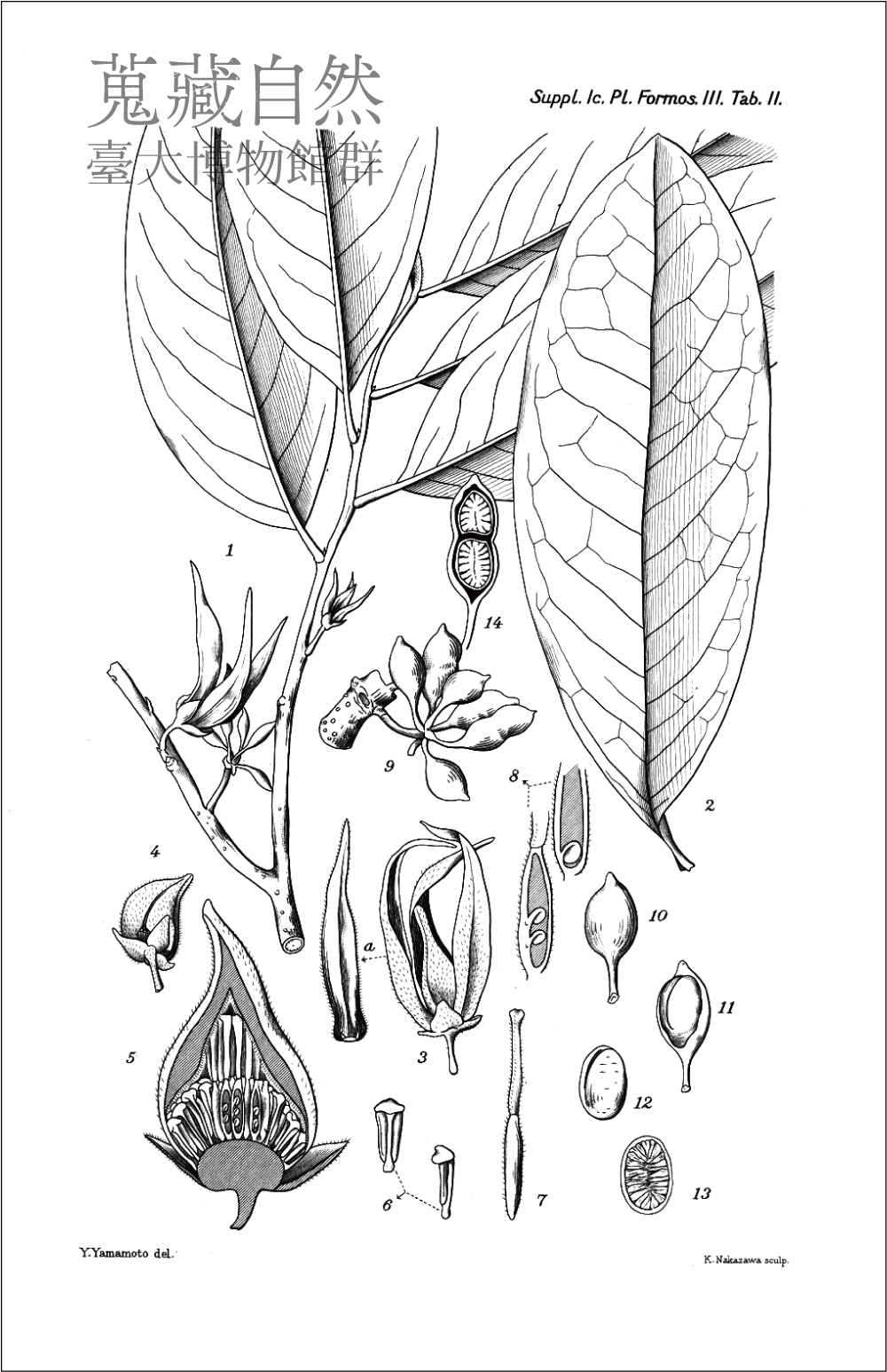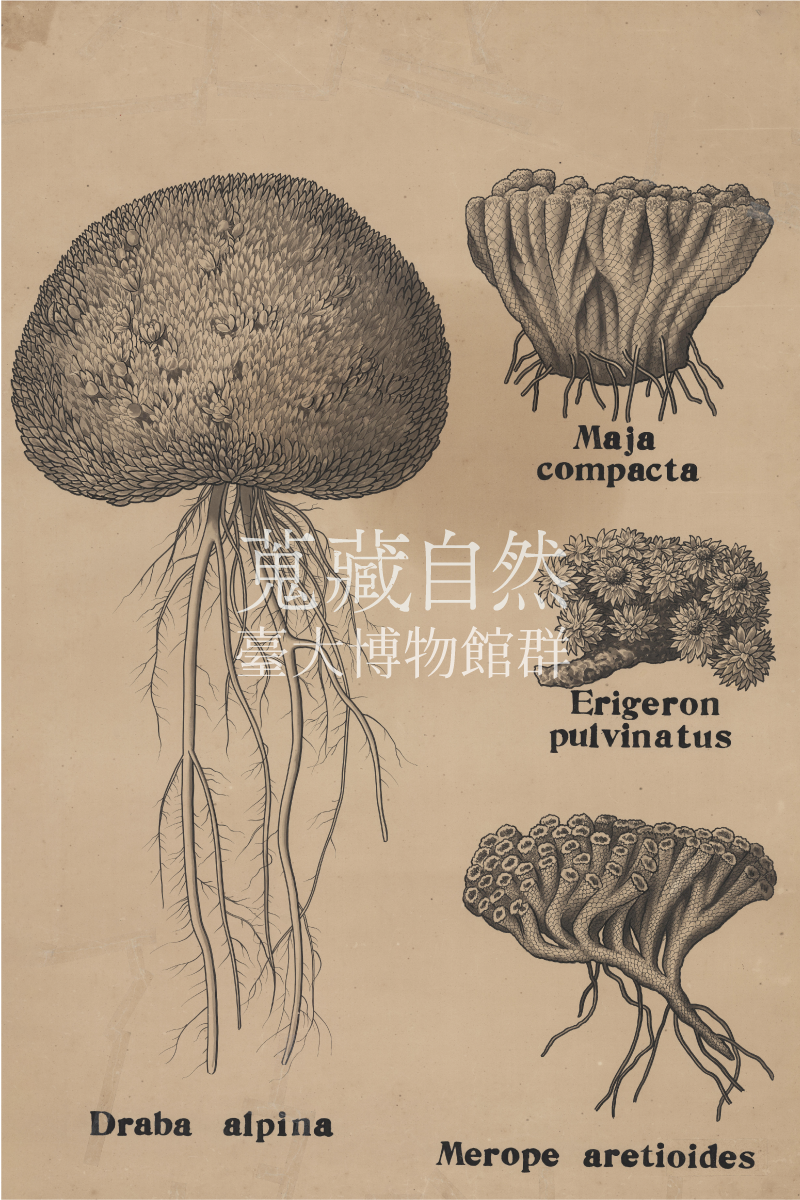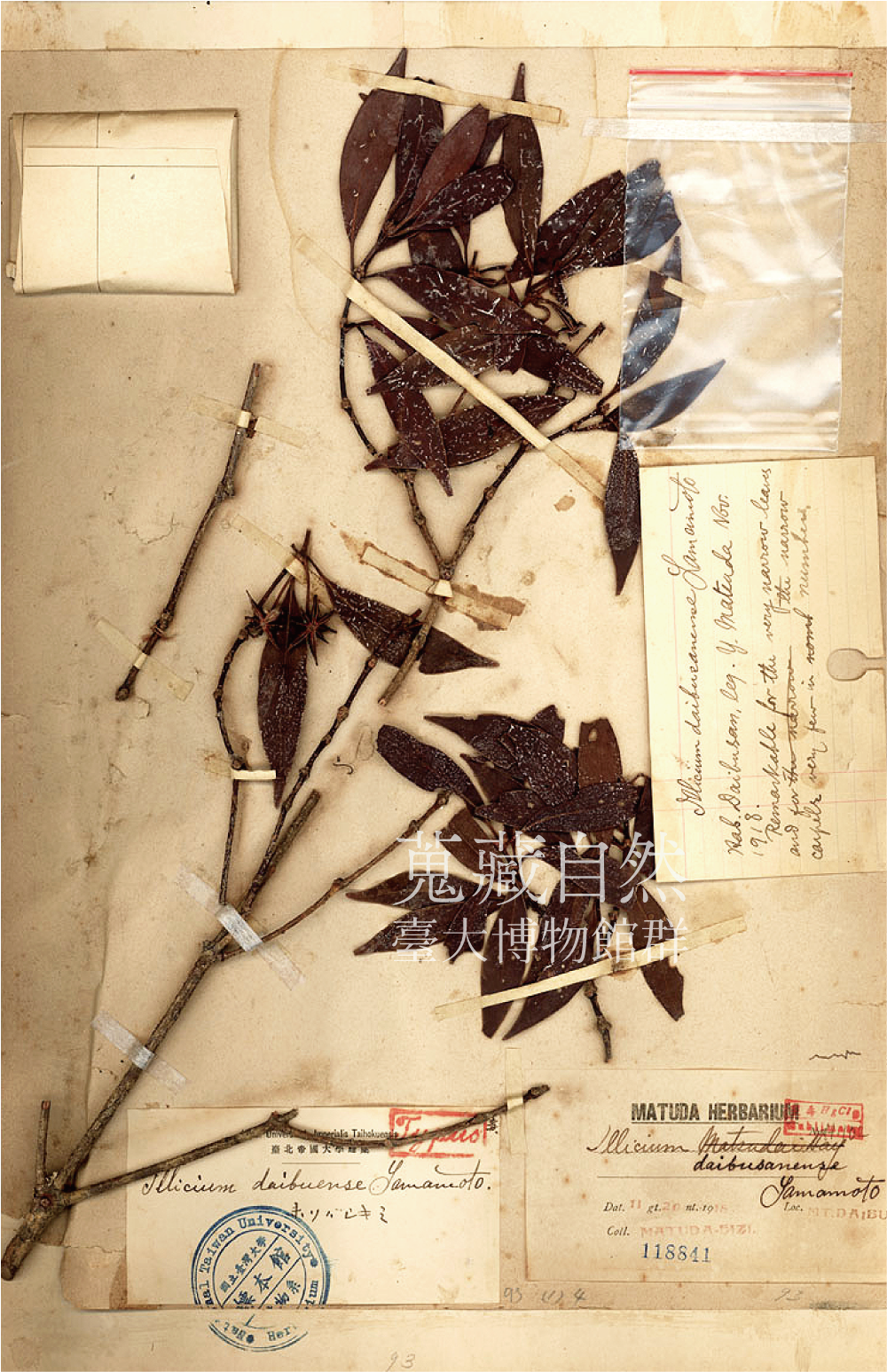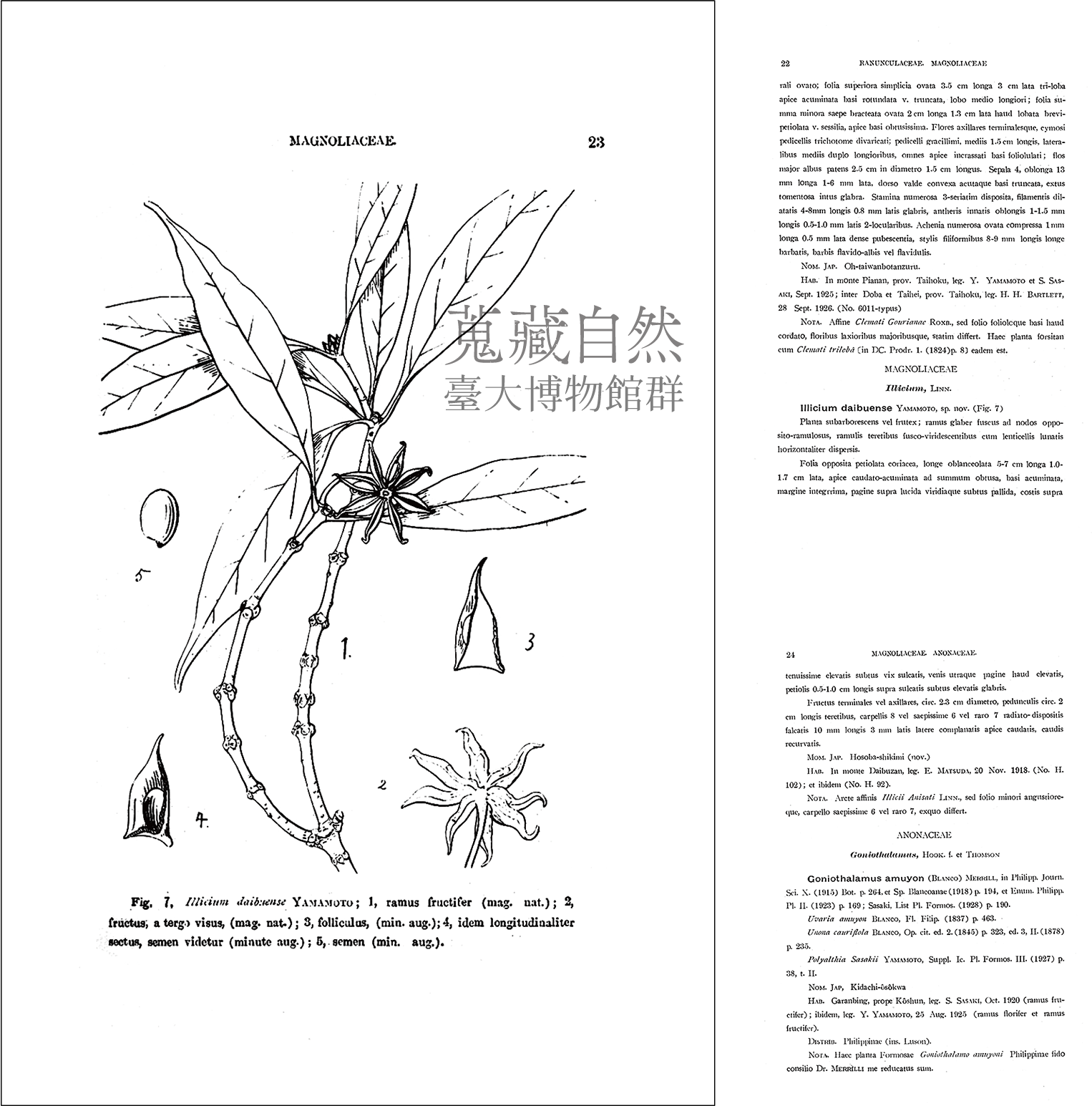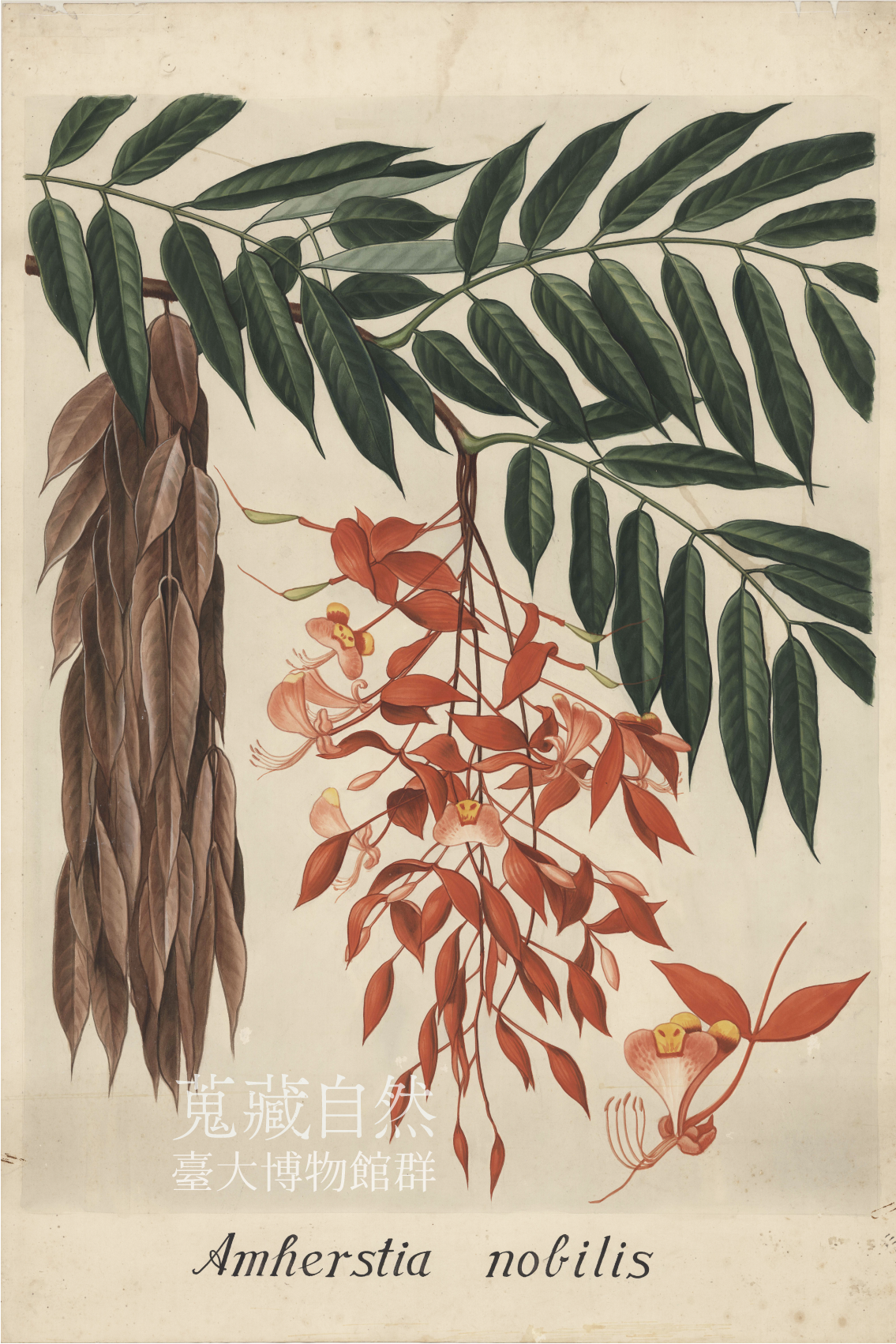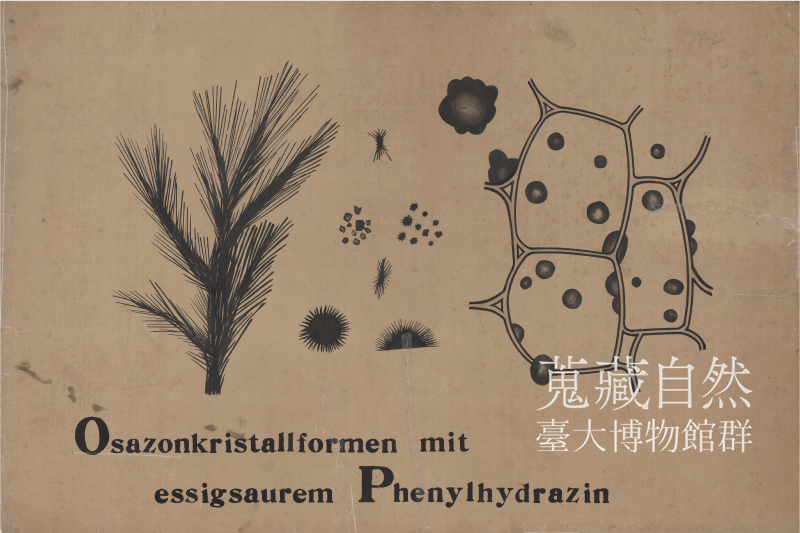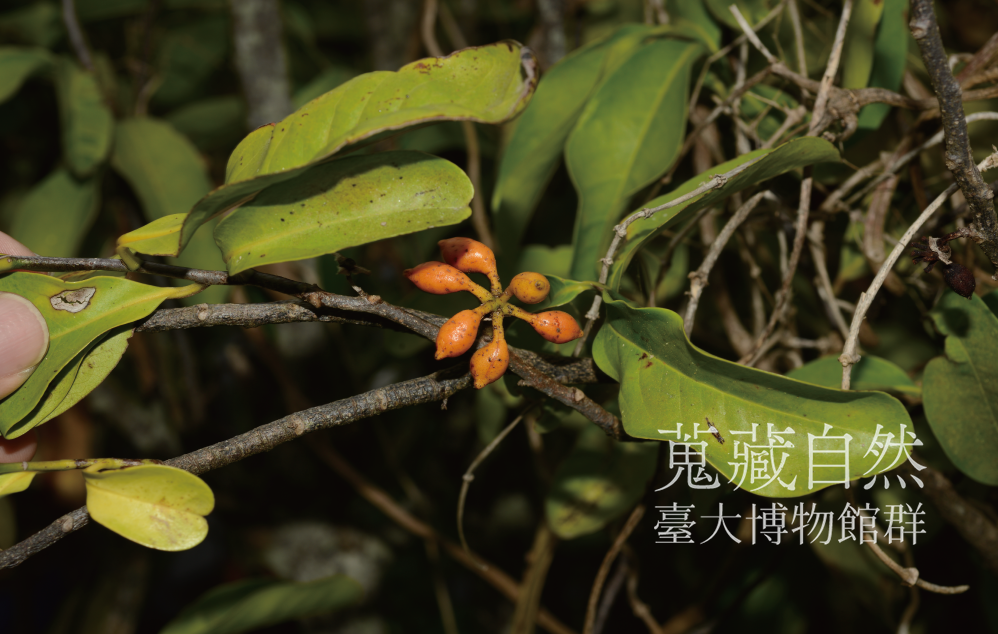其他成果 Others
科學繪圖
Scientific illustration
科學繪圖最初就是源於對自然的觀察描繪,而演進成為記錄和解釋科學概念的表現型式。生物或地質的科學繪圖不論是對於自然史的發展有舉足輕重的角色,在相關各學門中,分類學、形態學、細胞學、解剖學、人體醫學等,也都是重要的科學教育媒材。雖然時至今日攝影和數位影像已被廣泛的應用,但是科學繪圖仍然在世界各地的科學教育中被強調,主因在於它不僅可以簡約複雜資訊於繪圖中,也可以訓練學生在繪圖的過程中對物件能更仔細的觀察。此外,生物科學繪圖發展至今,也因其特殊呈現方式,而在藝術型式上獨樹一格,成為跨域生物藝術的基礎。
自然史相關的科學繪圖大約從17世紀與大航海時代的探索息息相關,許多探險團隊自己或是另外找專業人士來進行採集物件之科學繪圖。19世紀後,東亞也隨著西方科學的引入而將科學繪圖一併帶入科學探索和教育的工作中。
Scientific illustration has evolved from the observation and drawings of nature to a recording form and delineation of scientific concepts. Biological and geological scientific illustrations not only are vital to the development of natural history, but also serve as essential instructional materials in related disciplines, including taxonomy, morphology, cytology, anatomy, and human medicine. Although photography and digital imaging have become prevalent in modern times, scientific illustration is still very much emphasized in scientific education. The reason lies in its capability of not only simplifying complex information into an illustration, but also training students to develop a keen eye for objects during drawing. Furthermore, it has become a unique art form for its peculiar characteristic of presentation, thereby setting the cornerstones for the cross-disciplinary art practice of BioArt.
The explorations during the Age of Discovery in the 17th century gave rise to natural science illustrations. Many exploration teams have either hired professionals or conducted scientific illustrations of objects themselves. After the 19th century, following the introduction of Western science, East Asia also incorporated scientific illustrations into its scientific explorations and education.

臺灣香蘭
Haraella, A New Genus of Orchids from Formosa
臺灣香蘭是1930年由工藤祐舜在《熱帶農學會誌》所發表的臺灣特有屬植物,圖版由佐久間文吾依據工藤命名之「同模式標本」繪製,是臺灣四種特有屬植物中最美麗的一個,從圖片可看出其精湛的繪法。
Haraella was published in 1930 by Kudo Yushun in the Journal of the Society of Tropical Agriculture as the endemic plant to Taiwan. The drawing was made by B. Sakuma according to isotype named by Kudo. It is the most beautiful among the four endemic plants in Taiwan. The superb technique can be seen from the drawing.
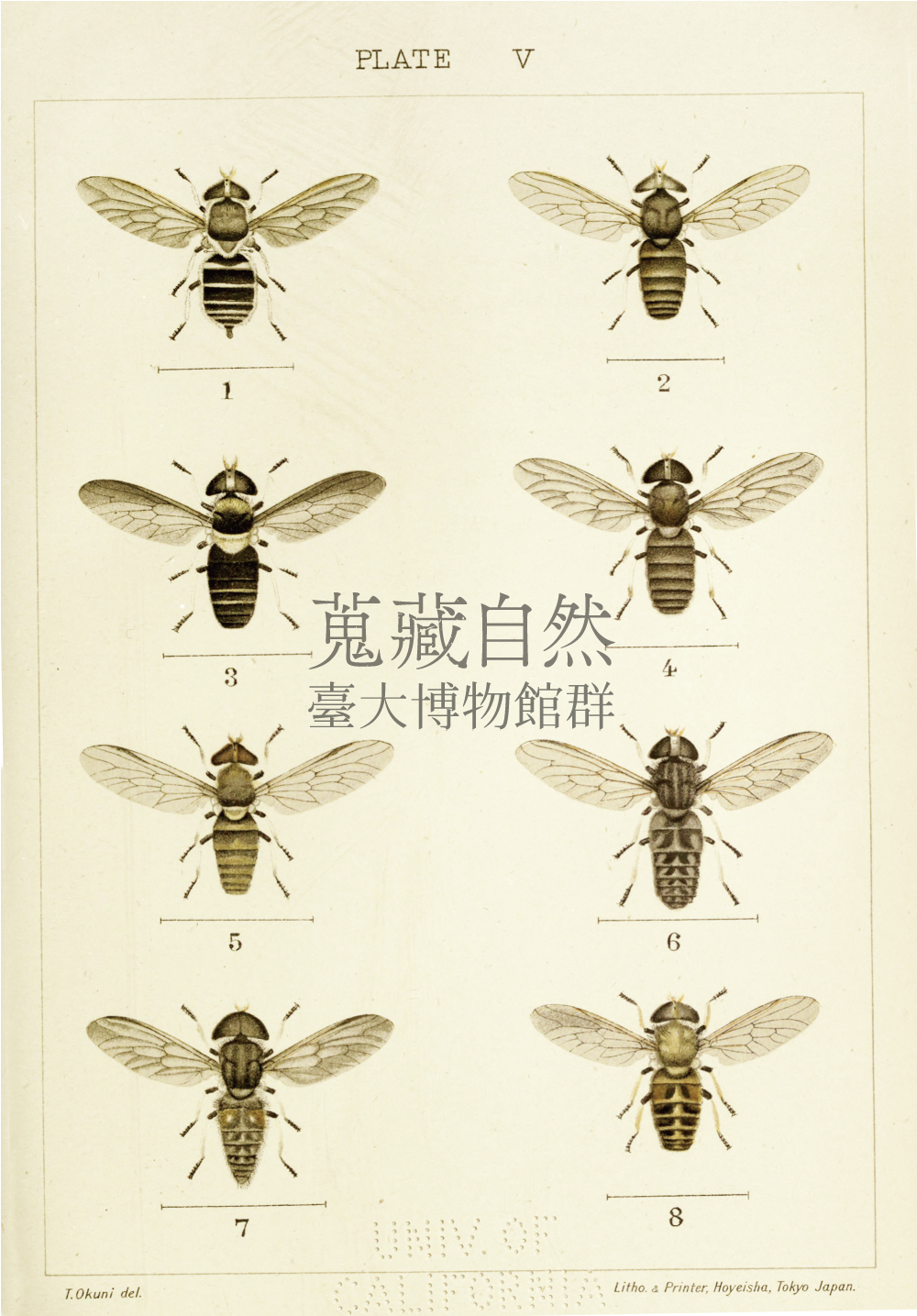
《臺灣的吸血昆蟲-第一冊、虻科》
Blood-sucking Insects of Formosa- Part 1, Tabanidae
臺灣的吸血昆蟲-五帶虻、六帶虻、黃條虻、臺灣麻虻。出處:Biodiversity Heritage library
臺灣屬於熱帶、亞熱帶島嶼,對日本人而言,熱帶疾病防治甚為重要。素木得一在1918年完成著作《臺灣的吸血昆蟲-第一冊、虻科》。在二十世紀初期,攝影技術還不發達的年代,為了記錄昆蟲的特徵及形態,除了透過文字的敘述,圖像更是比較好理解的一種紀錄方式。此著作內文撰寫及黑白圖畫為素木得一所著,彩色繪圖則為大國督繪製。
Blood-sucking insects of Taiwan: Tabanus quinquecinctus, Tabanus sexcinctu, Tabanus fulvimedioides, Haematopota formosana.
Taiwan is a tropical and subtropical island. For the Japanese, the prevention and treatment of tropical diseases was of the utmost importance. In 1918, Shiraki Tokuichi completed the book “Blood-sucking Insects of Formosa- Part 1, Tabanidae.” Before photography became well-developed in the beginning of the 20th century, illustration was a better way to keep records besides texts to record the characteristics and morphology of insects. The text and black-and-white illustrations in this book were completed by Shiraki Tokuichi, and the color illustrations were drawn by Okuni Tadashi.

鼠類圖鑑版畫
Plates in Rates and Mice of Formosa
臺灣產鼠類圖說(昭和16年臺灣博物館協會發行)的作者是青木文一郎和田中亮,插圖由植物昆蟲畫家佐久間精製完成。此幅為在製作書籍時所製作的版畫,為臺灣產鼠類圖說當中的圖版結合而成。
Rats and Mice of Formosa (published in Showa 16 by the Natural History Society of Formosa) was authored by Aoki Bunichiro and Tanaka Ryo. The illustrations was created by the noted plant and insect illustrator, B. Sakuma. The printmaking shown here was produced at the same time as the book to present the plates in Rats and Mice of Formosa as a whole package.
